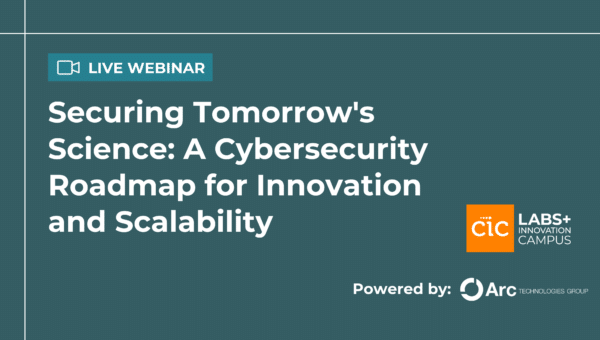As an event organizer, you want two things: for the event to run smoothly and for your attendees to have a positive experience.
Before and during the event, you’re taking care of what likely feels like a million details to ensure you meet those goals. If you’re hosting an in-person gathering, you’re probably prepping the space to look presentable and be comfortable. If you’re convening on Zoom, you want to make sure the invite link works and that your screenshare skills are up to snuff.
But what happens when you have to manage two audiences within the same event: some people joining you physically while others tune in online?
Events with mixed online and in-person audiences are a great way to expand your reach and make your gatherings more accessible.
However, this blended format has its unique challenges. It might feel like managing in-person and remote elements creates more work, or you risk favoring one audience’s experience over the other’s.
Here’s the good news: Like with any skill, a little research and practice will put you on the path to mastering the art of managing simultaneous online and in-person audiences.
Below we’ll go over the nuts and bolts of hybrid events, when and why to host them, and everything you need to do so successfully. Your next event is just waiting for you to plan it, so let’s jump right in!
What is a Hybrid Event?
A hybrid event is a type of programming that involves both in-person and virtual elements. This could mean that all presenters are in a single location with attendees being entirely remote, or that a small group of audience members are gathered together while the event is simultaneously broadcasted to a remote audience.
Benefits of Hybrid Events
In-person and virtual events both have their perks, and hybrid events can give you the best of both worlds. Here are the top benefits to events with blended audiences:
1. Grow your reach
Giving attendees a virtual option to attend is one of the best ways to widen the reach of your event. With the powers of the internet, you no longer have to limit your audience to those in your immediate geographical location. If you’re using events as a way to grow your business, build community, or simply reach as many as possible, hybrid events can help you do that.
2. Increase accessibility
Hybrid events can remove some barriers to attendance. People who may not be able to attend in person, perhaps due to childcare, scheduling, accessibility, or transportation barriers, are suddenly able to engage with your programming. And if you’ve recorded your event, your impact can spread even further.
3. Create a flow
Presenters in the same physical location can easily build off each other and develop an in-person rapport without worrying about muting, cutting each other off, or at-home tech glitches. And being able to welcome an audience on site allows organic connections to grow between attendees and presenters, particularly amongst local groups.
At the same time, you maintain accessibility for your at-home audience and encourage people who are more hesitant with in-person communicators to add their voices to the chat.
4. Gather and harness data
Hybrid events make data gathering and metrics easier than ever, allowing you to track engagement and develop customer pipelines right from registration. You can even customize your post-event emails for audience members who attended your event versus those who registered but did not attend. This type of tailored communication can help drive sales and engagement.
5. Cut costs
Hybrid events can often be more cost-effective and environmentally sustainable than in-person events. With attendees online, you can provide fewer refreshments, book a smaller venue, print fewer materials, and prompt less energy use for attendees to travel to the site.
How To Plan an Event for Blended Audiences
When creating a hybrid program, you’ll want to spend some time thinking about the cohesive event experience for attendees, as well as unique needs of your in-person and virtual audiences.
It’s easy to overlook a virtual attendee experience when you have a blended audience, but the experiences are vastly different and must be considered both independently and together. If you want all your attendees to feel welcome and have a good experience, setting up a camera in your physical event space and broadcasting it through cyberspace won’t cut it.
Luckily, if you plan ahead with the tips below, you’ll ensure a smooth and engaging event for remote and in-person audiences alike.
Prepare your space
As with any event with a virtual component, you’ll want to make sure your broadcasting space is appropriate for both an in-person and remote audience. You should test lighting, camera setup, and any devices you’ll be using well ahead of the event. See how they look in person as well as on a screen. This blog post gives the full rundown on steps you can take to run your virtual event smoothly.
Define roles
Consider having a separate in-person and virtual event manager during the event. Maybe the speaker’s mic goes out or the caterer is late — that’s enough for one person to handle alone. But add troubleshooting virtual attendee issues, fielding chat questions, and helping facilitate virtual engagement, and things are bound to fall through the cracks.
Your virtual event manager can help represent the virtual audience to in-person attendees by relaying questions to the speakers and ensure that the visuals of the event are smooth and engaging for the virtual audience.
Separating roles will allow each person to focus on their primary audience, while creating a cohesive experience for all attendees.
Stay on schedule
Virtual events tend to run shorter than in-person ones. Set a schedule that’s mindful of both audiences, and stick to it.
Virtual audience engagement can be harder to maintain when at-home attendees have multiple demands on their attention, so make sure you’re providing impactful and succinct content that keeps everyone’s attention throughout.
As with all events, make sure you’re respecting all participants’ time by ending on schedule as well.
Make it dynamic
Your attendees are having two unique experiences, and it’s important to cater to both. Think about ways to make your event more active, particularly for your virtual audience.
You might decide to use multiple camera angles for a panel event, or keep a camera on a single speaker while they’re sharing their presentation. In any case, make sure that the visuals change every few minutes to keep your audience’s attention.
Engage your audience & set norms for participation
Set an expectation with your presenters that they should regularly acknowledge the folks calling in remotely. You want to show virtual attendees that they’re an integral part of your audience, not an afterthought.
Utilizing polls and the Q&A feature can help to keep members’ attention throughout the event. Different broadcasting platforms can help you with this, so make sure you’re using the right software!
Meanwhile, your virtual event manager can help relay any observations from your virtual audience to the in-person attendees.
A significant hurdle for any successful hybrid event will be keeping your remote audience engaged and making their voices heard, particularly when an in-person audience can simply vocalize questions as they pop up. You might decide to have all attendees submit their questions in the same format to create a more equitable attendee experience. For example, platforms like Sli.do allow both on-site and remote attendees to submit questions and upvote popular topics. As long as attendees know how to engage during the event, this can be a great tool.
Communicate at the start of the event how you will be fielding questions and what audience members can expect. Feel free to remind folks in person or in a virtual chat box what these best practices are during the event.
Build connections
How are virtual attendees meeting each other? Services like Remo and Airmeet offer virtual tables where attendees can hop in and out of small groups. Zoom can also host breakout rooms and chats during the event, allowing remote attendees to “gather” in a virtual realm.
No matter what you choose, you’ll want to be conscious that hybrid events require more deliberate effort on the part of the organizers to facilitate connections that happen organically in an event space.
Follow it up
In person, getting some one-on-one time with presenters after the event is easy — you can connect over refreshments or approach them while they’re putting away their laptops. Online, this becomes more complex.
If you send out a post-event recording of the event, you might also consider following up with virtual attendees and allowing them to schedule time with the presenter. Tools such as You Can Book Me are an easy way to schedule one-on-one conversations.
Alternatively, if your speakers have limited time for follow-up, you can create a post-event Q&A for any virtual attendees who want to spend some time chatting with speakers further.
Getting Ready for Your Hybrid Event
There are so many ways to engage audiences both in person and online, and with hybrid events, you can do both simultaneously. The key to success here is to identify the needs of each type of audience and of your presenters so you can be prepared for a smooth, engaging ride. We anticipate hybrid events becoming increasingly common, especially in the post-COVID landscape, and the CIC Events team is excited to help you engage your blended audiences through event space rentals and virtual event services. Check out our Events page for more information on our offerings at each CIC location.




